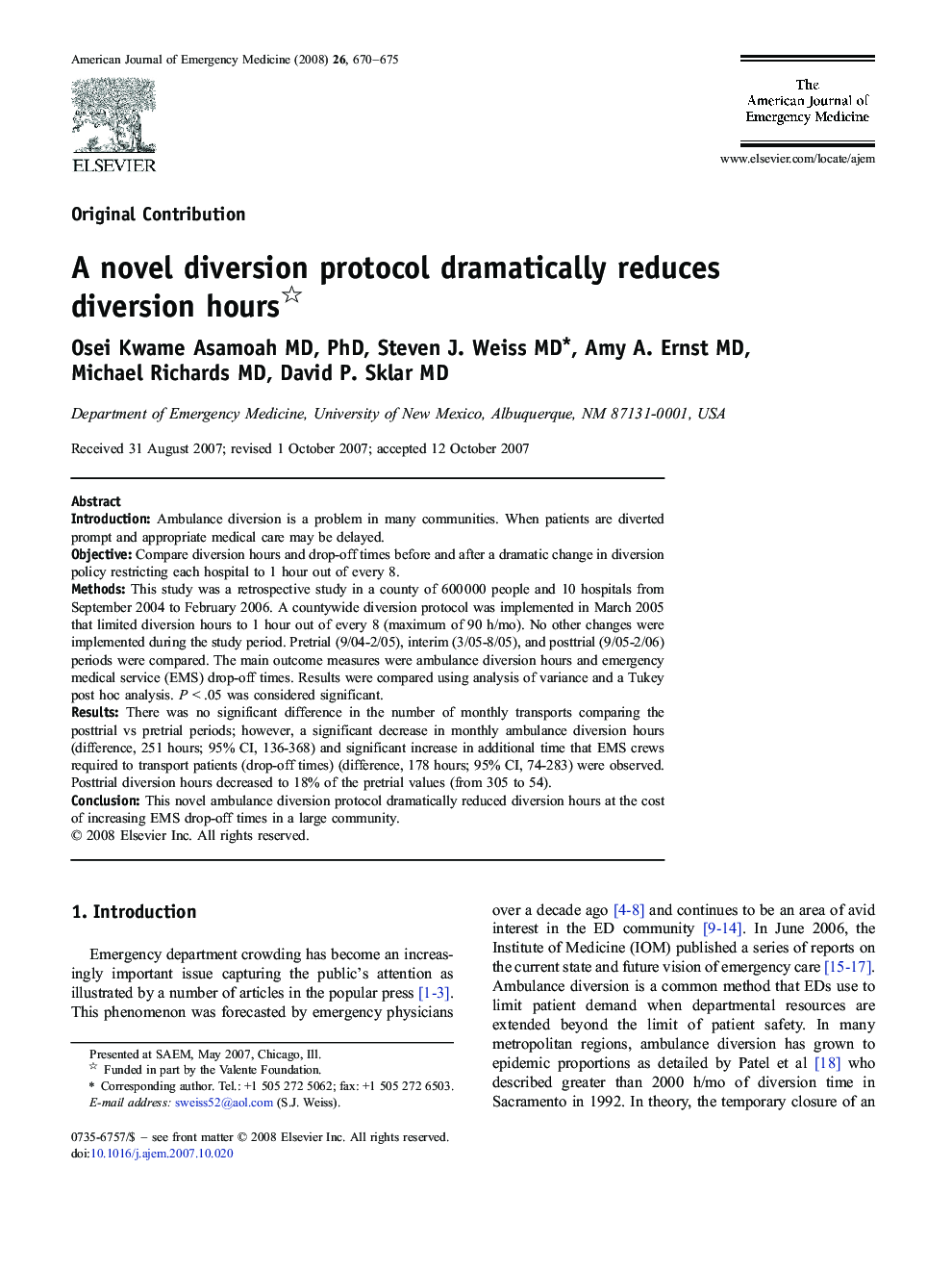| کد مقاله | کد نشریه | سال انتشار | مقاله انگلیسی | نسخه تمام متن |
|---|---|---|---|---|
| 3226189 | 1588174 | 2008 | 6 صفحه PDF | دانلود رایگان |

IntroductionAmbulance diversion is a problem in many communities. When patients are diverted prompt and appropriate medical care may be delayed.ObjectiveCompare diversion hours and drop-off times before and after a dramatic change in diversion policy restricting each hospital to 1 hour out of every 8.MethodsThis study was a retrospective study in a county of 600 000 people and 10 hospitals from September 2004 to February 2006. A countywide diversion protocol was implemented in March 2005 that limited diversion hours to 1 hour out of every 8 (maximum of 90 h/mo). No other changes were implemented during the study period. Pretrial (9/04-2/05), interim (3/05-8/05), and posttrial (9/05-2/06) periods were compared. The main outcome measures were ambulance diversion hours and emergency medical service (EMS) drop-off times. Results were compared using analysis of variance and a Tukey post hoc analysis. P < .05 was considered significant.ResultsThere was no significant difference in the number of monthly transports comparing the posttrial vs pretrial periods; however, a significant decrease in monthly ambulance diversion hours (difference, 251 hours; 95% CI, 136-368) and significant increase in additional time that EMS crews required to transport patients (drop-off times) (difference, 178 hours; 95% CI, 74-283) were observed. Posttrial diversion hours decreased to 18% of the pretrial values (from 305 to 54).ConclusionThis novel ambulance diversion protocol dramatically reduced diversion hours at the cost of increasing EMS drop-off times in a large community.
Journal: The American Journal of Emergency Medicine - Volume 26, Issue 6, July 2008, Pages 670–675